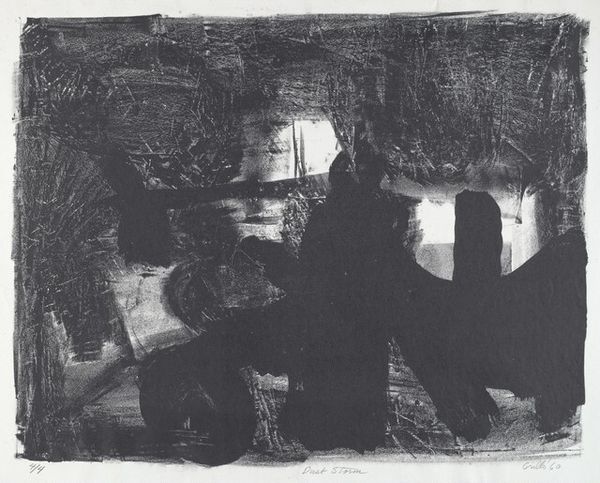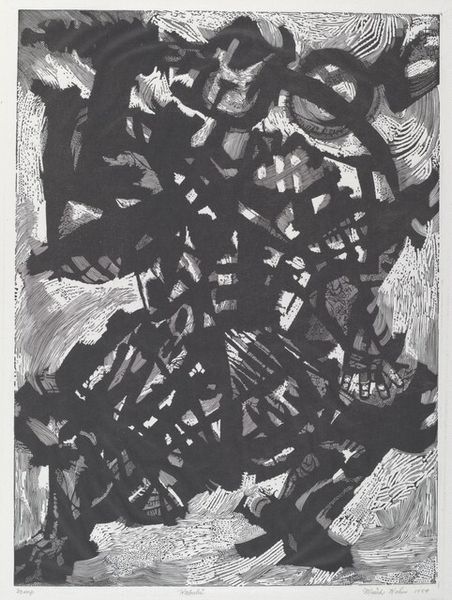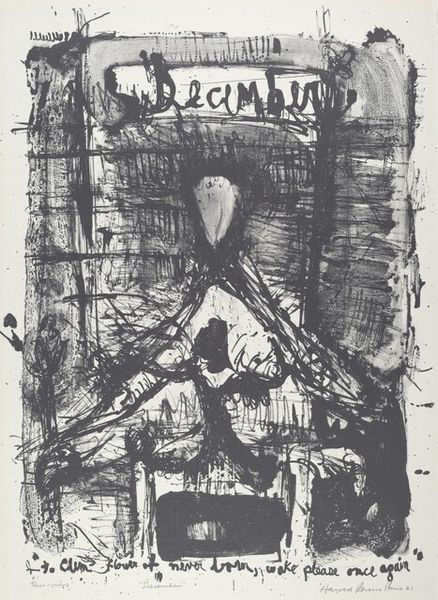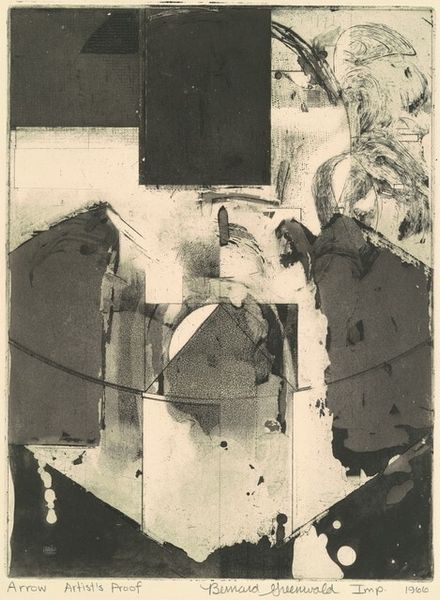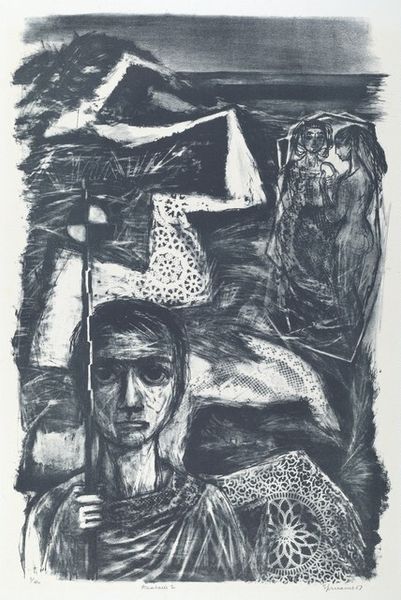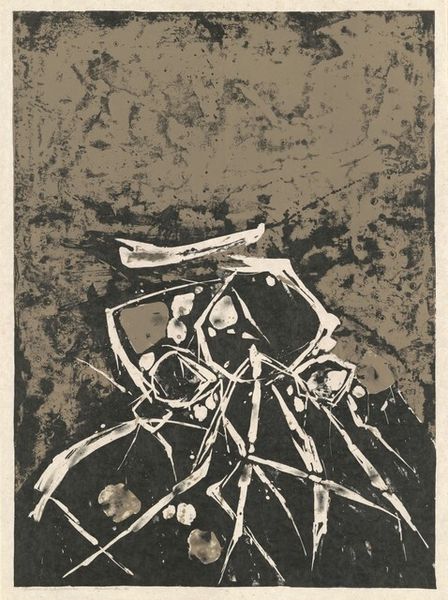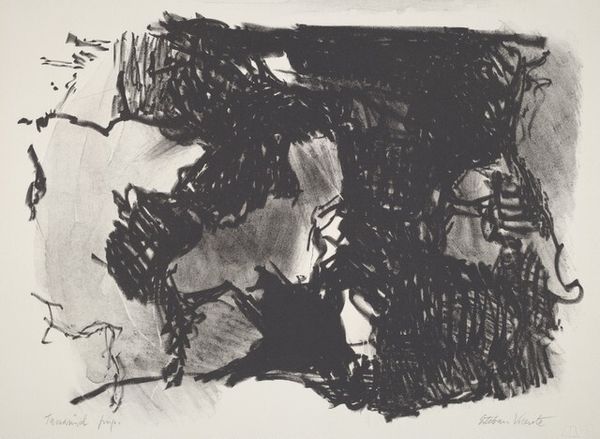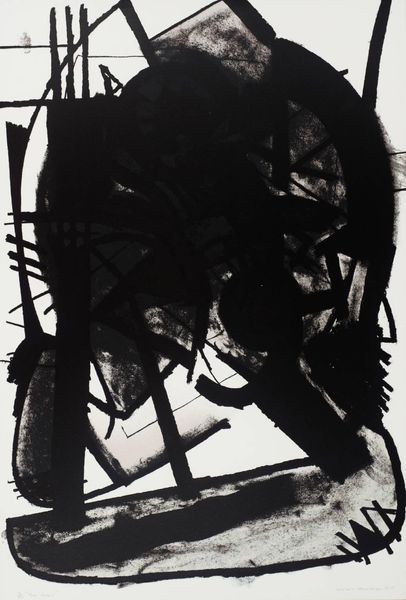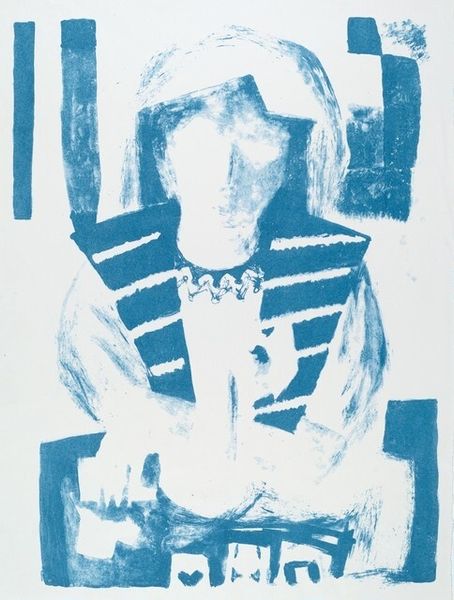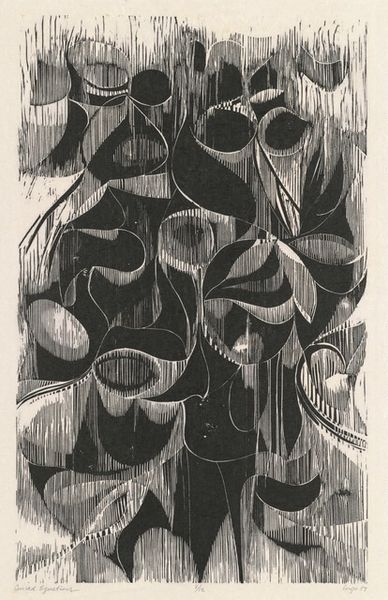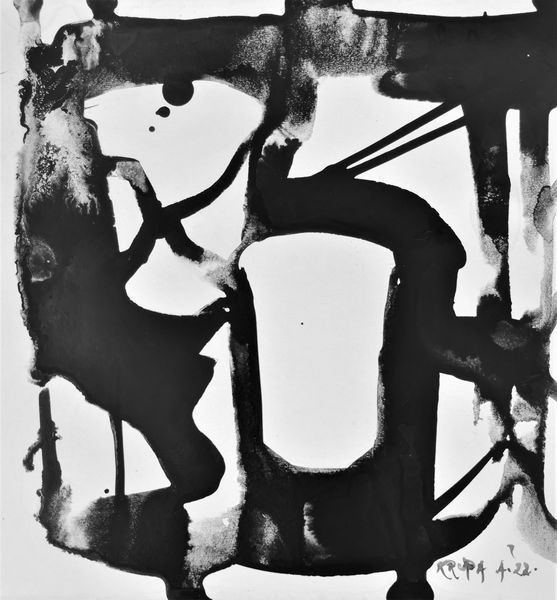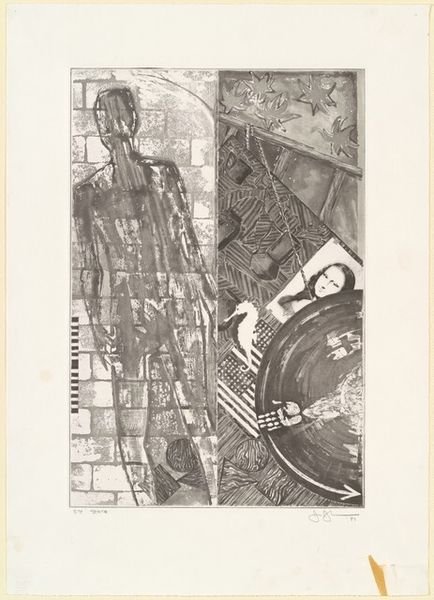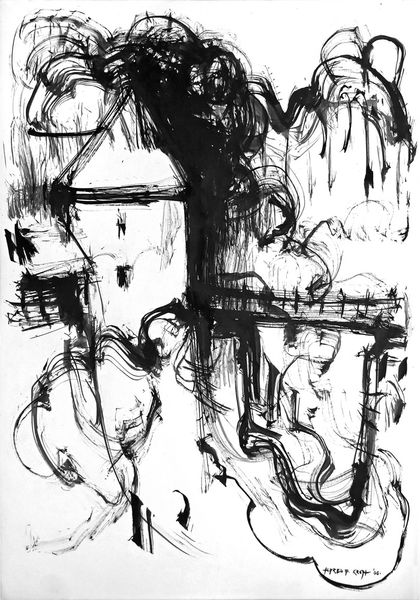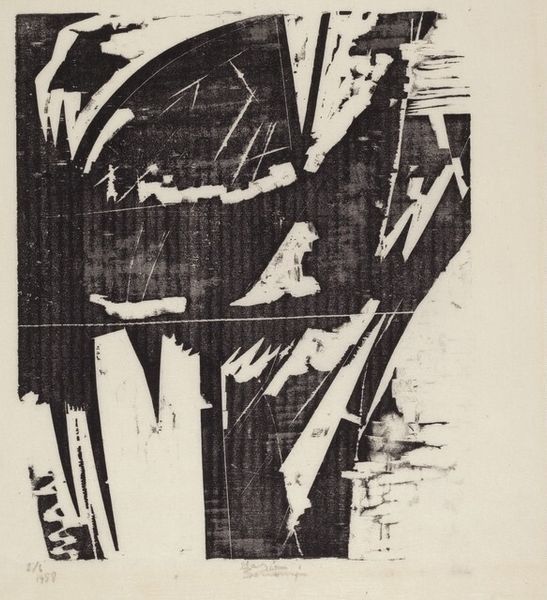
graphic-art, print, monoprint
#
abstract-expressionism
#
graphic-art
# print
#
monoprint
#
abstraction
#
line
Copyright: National Gallery of Art: CC0 1.0
Editor: This is Goro Kumagai's "Symphony #2", a monoprint in black and white. It has such a heavy, almost oppressive feel to it with all those bold lines and textures. I wonder, what's your take on it? Curator: It's a compelling piece. The energy is undeniable. As a monoprint, its very creation speaks to the labor and the process involved. We see a dance between intention and accident here, right? A singular print made by hand each time. Think about the artist, meticulously inking the plate, wiping away, drawing into it. How do those choices – the means of production, impact how we consume and interpret this work? Editor: That’s interesting. So, you're saying the "how" it was made is just as important as what it looks like? I never really thought about prints that way before. Curator: Absolutely. Look at the grid-like structure juxtaposed against the more organic forms. Consider what the artist had access to in his studio, the materials available. Was he interested in elevating what would otherwise be a commercialized process? Monoprint can have unlimited variability that undermines commercial interests. Think about the pressures of artistic production on an artist during his life in Post War Japan and after. What kinds of things were available, disposable, or desired? Editor: That gives me a lot to consider. Is this artwork referencing specific things from Kumagai's time, through form or use of medium? Curator: Perhaps the reference lies more in the act of creation itself—the physicality, the deliberate manipulation of materials, and the challenging of traditional hierarchies. What "Symphony" does Kumagai wants us to focus on, the high art of classic orchestra or the act of creating visual experience with his own hand, not without labor? Editor: I see your point! So, by looking at the materials and process, we're not just appreciating the final product but also acknowledging the artist’s effort, and even making a statement about the value of handmade art in a world of mass production. I think I've learned a way to value art's labor like the labor in my life! Curator: Exactly! It’s a challenge to think differently about what constitutes “high art,” by elevating and valuing the labor involved in less traditionally valued media.
Comments
No comments
Be the first to comment and join the conversation on the ultimate creative platform.
